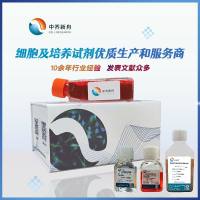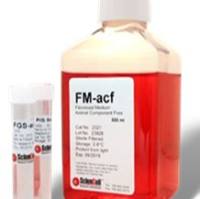动物细胞培养介绍(Introduction to Animal Cell Culture)
互联网
- 相关专题
细胞培养 (Cell Culture)专题:
http://ask.bbioo.com/special/experiment/Cell culture.htm
John A. Ryan, Ph.D.Corning IncorporatedLife science s45 Nagog ParkActon, MA 01720
Table of ContentsIntroduction What is Cell and Tissue Culture? How are Cell Cultures Obtained?What Are Cultured Cells Like?What Are Some of the Problems Facedby Cultured Cells? How to Decide if Cultured CellsAre “Happy”? What is Cell Culture Used For? References
Introduction
Cell culture has become one of the major tools used in the life sciences today. This guide is designed to serve as a basic introduction to animal cell culture. It is appropriate for laboratory workers who are using it for the first time, as well as for those who interact with cell culture researchers and who want a better understanding of the key concepts and terminology in this interesting and rapidly growing field.
What is Cell and Tissue Culture?
Tissue Culture is the general term for the removal  of cells, tissues, or organs from an animal or plant and their subsequent placement into an artificial environment conducive to growth. This environment usually consists of a suitable glass or plastic culture vessel containing a liquid or semisolid medium that supplies the nutrients essentialfor survival and growth. The culture of whole organs or intact organ fragments with the intent of studying their continued function or development is called Organ Culture. When the cells are removed from the organ fragments prior to,or during cultivation, thus disrupting their normal relationships with neighboring cells, it is called Cell Culture.
of cells, tissues, or organs from an animal or plant and their subsequent placement into an artificial environment conducive to growth. This environment usually consists of a suitable glass or plastic culture vessel containing a liquid or semisolid medium that supplies the nutrients essentialfor survival and growth. The culture of whole organs or intact organ fragments with the intent of studying their continued function or development is called Organ Culture. When the cells are removed from the organ fragments prior to,or during cultivation, thus disrupting their normal relationships with neighboring cells, it is called Cell Culture.
Although animal cell culture was firstsuccessfully undertaken by Ross Harrisonin 1907, it was not until the late 1940’sto early 1950’s that several developmentsoccurred that made cell culture widelyavailable as a tool for scientists. First, therewas the development of antibiotics thatmade it easier to avoid many of the contaminationproblems that plagued earliercell culture attempts. Second was thedevelopment of the techniques, such asthe use of trypsin to remove cells fromculture vessels, necessary to obtain continuouslygrowing cell lines (such asHeLa cells). Third, using these cell lines,scientists were able to develop standardized,chemically defined culture mediathat made it far easier to grow cells.These three areas combined to allowmany more scientists to use cell, tissueand organ culture in their research.During the 1960’s and 1970’s, commercializationof this technology had furtherimpact on cell culture that continues tothis day. Companies, such as Corning,began to develop and sell disposable plasticand glass cell culture products, improvedfiltration products and materials, liquidand powdered tissue culture media, andlaminar flow hoods. The overall result ofthese and other continuing technologicaldevelopments has been a widespreadincrease in the number of laboratoriesand industries using cell culture today.

Fixed and stained human foreskin explants on the surface of a 150 mm culture dish.The explants were cultured for approximately two weeks. Two of the nine explants (bottom left and right corners) failed to grow. The remaining explants show good growth. Each square is approximately 2 cm across. 
Primary culture from the fish Poeciliopsis lucida. Embryos were minced and dissociated with a trypsin solution. These cells were in culture for about 1 week and have formed aconfluent monolayer.









